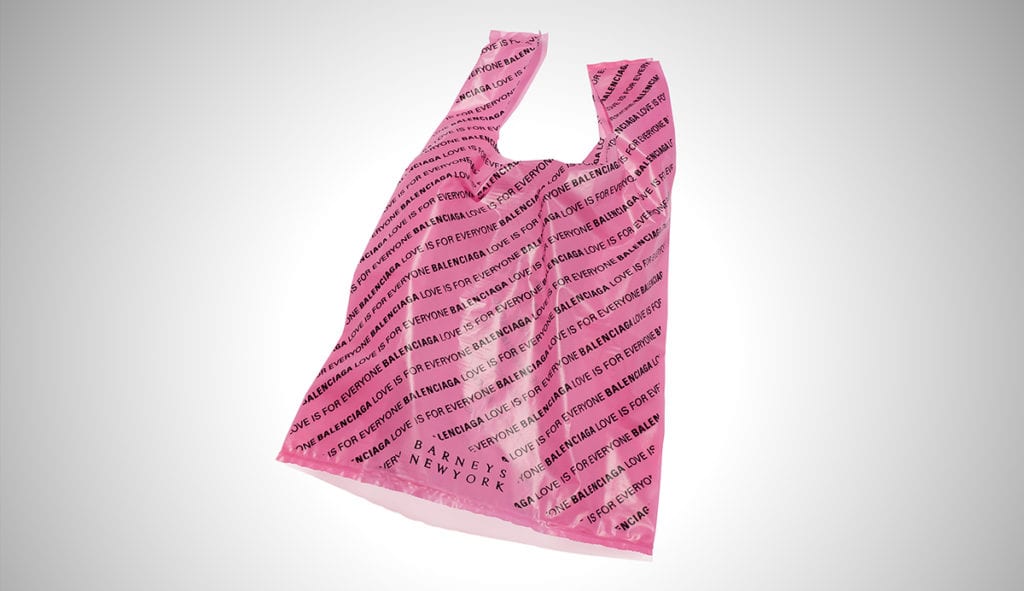The “retail apocalypse” of the past few years has resulted in an array of prominent retailers filing for bankruptcy, with Barneys being the latest one to look to Chapter 11 for protection from its more than 5,000 creditors, some of the biggest of which include brands like The Row, Celine, and Saint Laurent. Not only has the wave of bankruptcies and related store closures to date – and the ones still to follow – impacted a broad variety of retailers, including fashion and apparel companies, these financial fallouts have the potential to cause real harm to brands whose goods are stocked by those troubled retailers, particularly when they are carried in a consignment capacity.
A common retail arrangement, consignment agreements see brands provide retailers with products, which the retailers store, market and sell. As distinct from traditional wholesale, in which brands sell their products to retailers outright at the outset for a reduced price, in a consignment situation, a brand will maintain ownership of the products that it provides to a retailer, and the retailer will pay it the brand a percentage of the revenue once the individual items actually sell to consumers.
Although such consignment agreements can be quite lucrative for both consignors (i.e., brands) and consignees (i.e., retailers), the string of retail bankruptcy filings, including Barneys’ recent Chapter 11 filing, demonstrates the very real need for brands to protect their security interests in their products. One of the greatest concerns arises in the context of retailer bankruptcies, where the retailer’s assets are frozen and/or are used to pay off a lengthy list of creditors, all while it maintains possession of brands’ on-consignment products and while it is the one that initially brings in revenue tied to the sale of those products.
When entering into consignment agreements, which many retailers use to hedge their bets when stocking new brands or those without a solid track record of sales, for example, brands must take necessary precautions to ensure that their security interests are protected, and that, in the unfortunate case of a retailer’s bankruptcy, the brand does not end up “at the back of the line,” so to speak, being treated as an unsecured creditor.
This is particularly necessary since there is a good chance that others maintain security interests in the retailer’s inventory, including the consigned goods, which conflicts with the title of the consignor brand when it comes to goods held by the retailer.
What happens to consigned goods when a retailer goes bankrupt?
When brands enter into consignment agreements with retailers, the terms may explicitly state that title in the consigned goods remains with the brand until the goods are actually sold by the retailer. In these instances, the parties contractually agree that title to the products will remain with the brand until such time as the consigned goods are sold. Thus, the intuitive reaction would be that the brand’s consigned goods are notto be included in consignee retailer’s inventory or larger asset pool in connection with a bankruptcy or similar proceeding.
Unfortunately, U.S. bankruptcy courts do not treat the terms of a consignment agreement or other written or oral arrangement as definitive or controlling in determining consignor’s rights over consigned goods.
Instead, bankruptcy courts look to whether the consignor has complied with the filing and notice requirements of Article 9 of the Uniform Commercial Code (the “UCC”), a comprehensive set of laws governing commercial transactions that all U.S. states have adopted. Bankruptcy courts consider consignment agreements or other arrangements which have not been filed and recorded in accordance with the UCC as imposing “secret” or “hidden” liens, which are disfavored as a policy matter.
Although a consignor brand that has followed the UCC filing and notice requirements with respect to its consigned goods is far more likely to receive favorable treatment in the bankruptcy of consignee retailer, it is important to keep in mind that the bankruptcy process may involve substantial complex litigation involving numerous stakeholders.
Recent high-profile cases of retailer bankruptcy disputes continue to highlight that courts remain divided as to how to treat consigned goods in bankruptcies, with courts disagreeing over whether a consignee retailer can sell off consigned goods in its possession without the consignor brand’s consent in the case of liquidation, and what priority a consignor brand may have over creditors with conflicting security interests, among others.
Ultimately, since it is difficult to determine where a court may come out in connection with any particular bankruptcy proceeding, brands should seek to protect their interest in consigned goods by following the filing and notice requirements of Article 9 of the UCC. While some bankruptcy courts have, nonetheless, favorably treated consignors who have failed to follow these requirements, these are exceptions to the general approach taken by such courts.
What are the UCC filing and notice requirements that apply to consignment transactions?
Consignment transactions in the U.S. are governed by Article 9 of the UCC. As an initial matter, the UCC defines “consignment” as a transaction in which a person delivers goods to a merchant for the purpose of sale and (a) the merchant deals in goods of that kind under a name other than the name of the person making delivery, is not an auctioneer, and is not generally known by its creditors to be substantially engaged in selling the goods of others; (b) with respect to each delivery, the aggregate value of the foods is $1,000 or more at the time of delivery; (c) the goods are not consumer goods immediately before delivery; and (d) the transaction does not create a security interest that secures an obligation. If the brand in question meets these criteria, its arrangement with the debtor retailer qualifies as a consignment transaction under the UCC.
In order to perfect its security interest in the consigned goods and establish priority over pre-existing creditors, the consignor brand must comply with certain filing and notice requirements set forth in Article 9. If the brand fails to perfect its security interest in the consigned goods, a judicial lien creditor—for example, a bankruptcy trustee or debtor-in-possession—would have priority over it in a bankruptcy or similar proceeding.
Pursuant to the UCC, a consignor brand must first prepare a UCC financing statement on Form UCC-1 and file the financing statement in the appropriate jurisdiction. The UCC dictates that “except as otherwise provided in this section, while a debtor is located in a jurisdiction, the local law of that jurisdiction governs perfection, the effect of perfection or non-perfection, and the priority of a security interest in collateral.”
For example, if the debtor retailer is incorporated in the State of New York, such as Barneys, the consignor brand needs to file the financing statement in New York with the New York Secretary of State.
Once the financing statement is filed, under the UCC’s priority rules, the consignor will generally be deemed to have priority over subsequent creditors with conflicting security interests (e.g., a subsequent bank lender who has consignee’s inventory as collateral or a creditor with a floating lien over the retailer’s inventory). This is commonly referred to as the “first to file” rule. However, the debtor retailer may have pre-existing creditors with conflicting security interests. A public search is recommended in order to establish the consignor brand’s priority over other parties and creditors (“RCF Lender(s)”), the brand must follow certain additional UCC requirements.
The UCC provides that consignor brand’s priority in its consigned goods is akin to a “purchase money security interest,” which means that consignor has priority over creditors with conflicting security interests, regardless of whether pre-existing or subsequent to consignor’s own filing. Accordingly, if the brand satisfies the requirements set forth in the UCC for a purchase money security interest, it establishes priority over the RCF Lender.
Although it is difficult to definitively ascertain what rights in the consigned goods a court may grant to the consignor brand in the unfortunate case of a bankruptcy by a retailer, brands can maximize the protection of their interest in consigned goods by following the UCC requirements set forth above.
While adhering to the default UCC guidelines does not provide absolute protection for brands in the base of a bankruptcy filing by a retailer, brands that take care to follow these procedures equip themselves with greater protection in future court proceedings. Finally, brands may want to consider amending their consignment agreements to provide additional protections separate from the UCC process. For example, brands may seek to add that the consignment agreement shall automatically terminate upon the filing of bankruptcy by the retailer with the immediate return of all consigned goods to the brand.
Article courtesy of Julia Paranyuk / Hand Baldachin & Associates LLP. Edits courtesy of TFL











